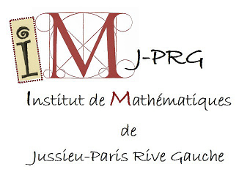

| Equipe(s) : | doctorants, |
| Responsables : | Salim Alloun, Brian Flanagan, Antoine Galet, Kostyantyn Krutoy |
| Email des responsables : | |
| Salle : | |
| Adresse : | |
| Description | Le séminaire des thésards est l'occasion pour les doctorants de présenter des résultats et des problématiques dignes d'intérêt devant un public de non-spécialistes. L'ambiance y est informelle ; poser des questions naïves est encouragé, et les questions moins naïves sont bienvenues dans la mesure où elles n'entravent pas le bon déroulement de l'exposé. Un mercredi sur deux à 18h00, en alternance entre Jussieu et Sophie Germain. |